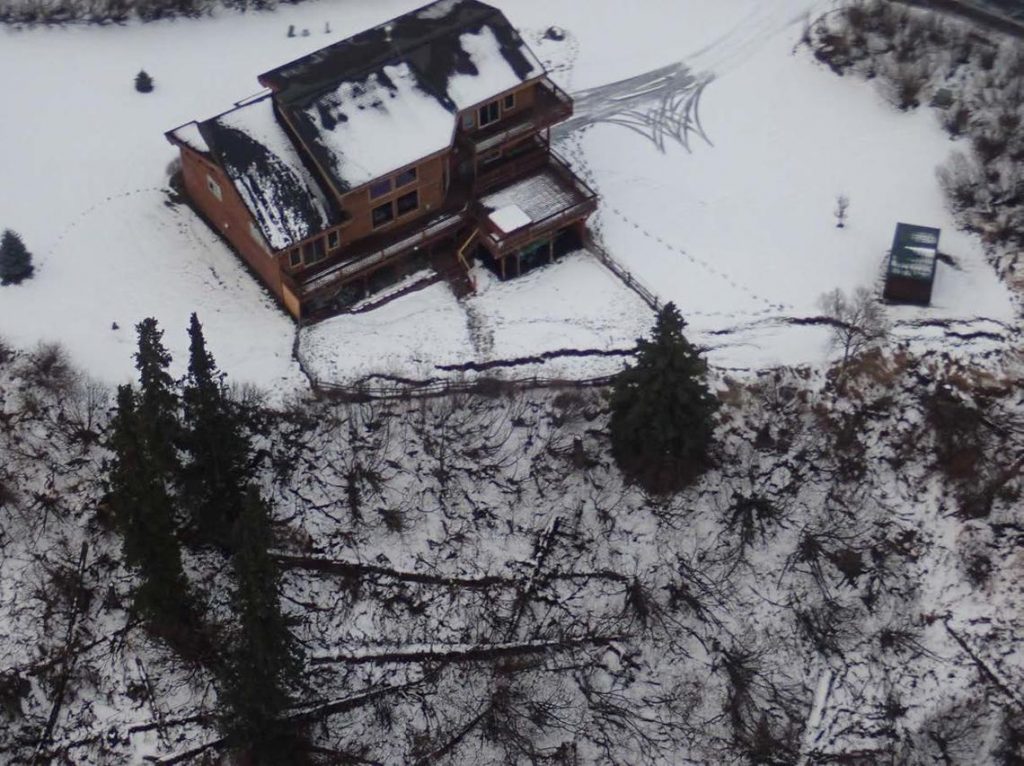22 October 2019–Major landslides triggered by the 1964 magnitude 9.2 Great Alaska earthquake responded to, but were not reactivated by, the magnitude 7.1 Anchorage earthquake that took place 30 November 2018, researchers concluded in a new study published in Seismological Research Letters.
The shaking that accompanied the 2018 earthquake was of a higher frequency and a shorter duration than shaking during the 1964 quake, both of which probably kept the 1964 landslides from moving downslope again, said Randall Jibson of the U.S. Geological Survey and his colleagues.
In places like Government Hill and Turnagain Heights, where devastating landslides had taken place in 1964, there were “cracks in the places where they had moved in 1964, but they just kind of oscillated in place,” Jibson said. “I think [the shaking] was well below what it would take for them to really take off and move again.”
After a major survey of ground failures caused by the 2018 earthquake, Jibson and his colleagues also noted many fewer landslides—several thousands fewer—than would be predicted for the area from landslide modeling based on earthquake magnitude.
Other differences between the 1964 and 2018 earthquakes might help to explain these findings, said Jibson. The 1964 Alaska quake was a megathrust event, where the rupture took place along the subducting boundary between two tectonic plates. The 2018 Anchorage intraslab quake, on the other hand, originated within a tectonic plate and at a greater depth than the 1964 quake.
Megathrust earthquakes like the 1964 event tend to produce longer durations and periods of shaking, said Jibson, which could trigger more and larger landslides. “We feel pretty strongly that one of the reasons the Anchorage earthquake didn’t trigger so many landslides is because it was an intraslab event,” he said.
Data from the Anchorage quake are helpful for scientists like Jibson who study how earthquakes differ in producing landslides across the globe. “For the past 30 years we’ve made comparisons based on [earthquake] magnitude alone,” he said. “But now we have seen enough earthquakes to know that it’s not just magnitude that affects landslides, it’s also focal mechanisms and tectonic settings and the frequency of earthquake waves.”

Jibson and his colleagues surveyed the Anchorage region on foot and by helicopter in the days after the 2018 earthquake to catalog a variety of ground failures caused by the earthquake, from landslides to liquefaction to ground cracking. Each of these types of ground failures caused significant damage in the area, the researchers concluded.
Landsliding in the River Heights neighborhood of Eagle River, for instance, moved houses off their foundations and severed utility lines, while earth slumps blocked an off-ramp to International Airport Road in Anchorage. Some Anchorage homeowners and businesses reported ejected sand in crawl spaces and cracked foundations due to liquefaction settlement.
One of the most damaging types of ground failure was extensional cracks, particularly at the boundary between natural and artificial slopes and areas graded flat for buildings. Two phenomena are at work in these settings that can lead to damaging cracking, said Jibson. Seismic shaking “tends to get amplified near sharp breaks in slope,” while differences in seismic properties between intact bedrock and loose fill cause “seismic waves to be trapped in the softer, loose material and they reflect back and forth,” he said.
Jibson and colleagues shared some of the ground failure analyses with a diverse group of researchers and local policymakers at a September conference in Anchorage, “One Year Later: Symposium on the 2018 M7.1 Anchorage Earthquake.” The symposium was organized by the Earthquake Engineering Research Institute and the Alaska Earthquake Center with support from the National Earthquake Hazards Reduction Program through the National Science Foundation and the U.S. Geological Survey.
The ground failure paper was published online in advance of an SRL focus section on the 2018 Anchorage earthquake. The full set of focus section papers will appear in print in the January 2020 issue (Volume 91, Issue 1) of the journal.
